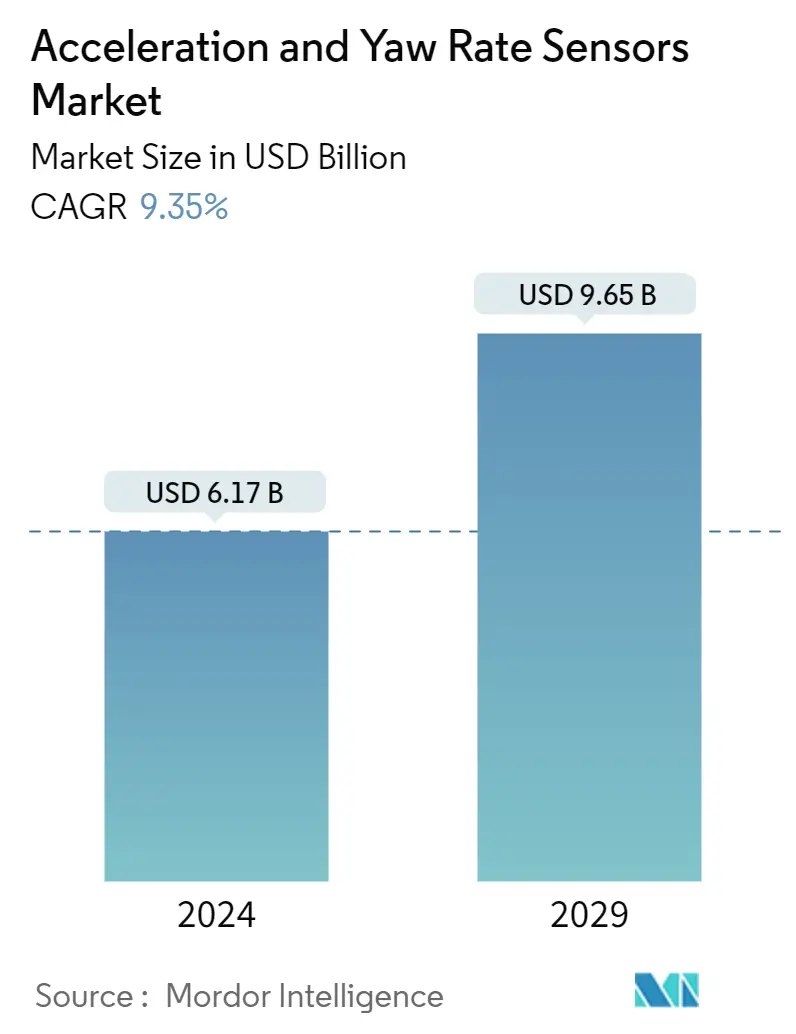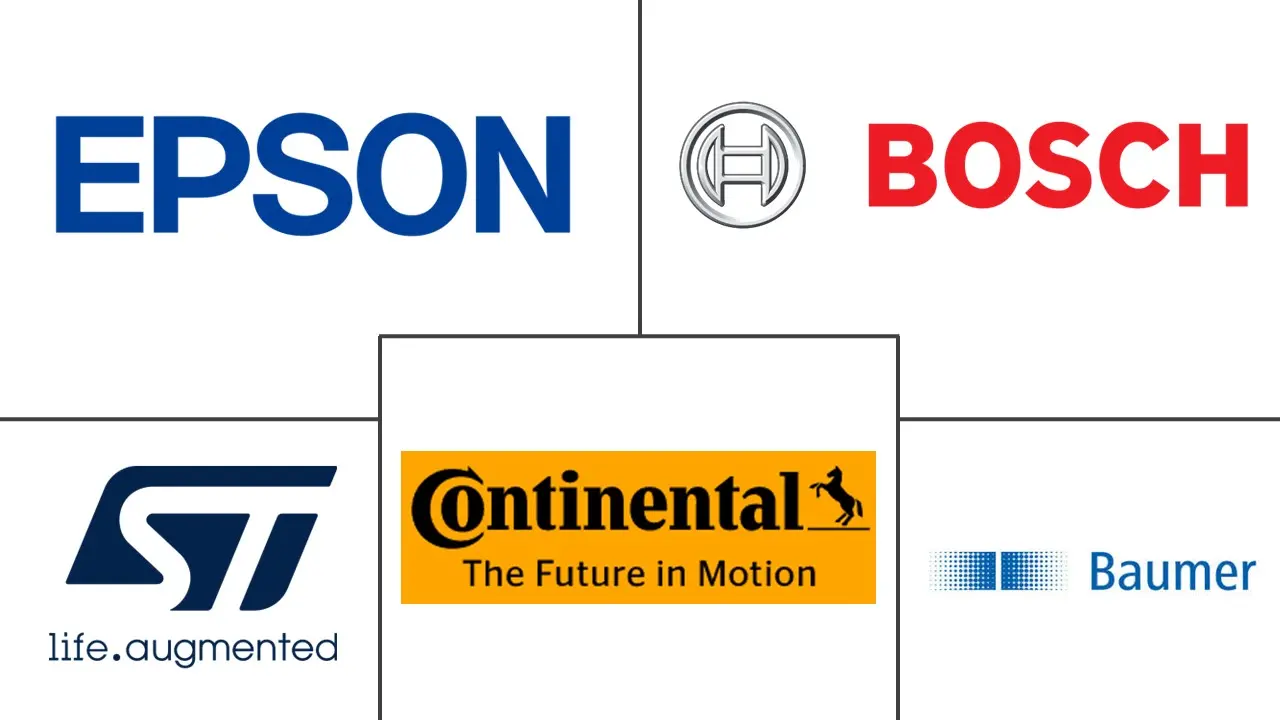Market Size of Acceleration And Yaw Rate Sensors Industry

| Study Period | 2019 - 2029 |
| Market Size (2024) | USD 6.17 Billion |
| Market Size (2029) | USD 9.65 Billion |
| CAGR (2024 - 2029) | 9.35 % |
| Fastest Growing Market | Asia Pacific |
| Largest Market | Asia Pacific |
Major Players
*Disclaimer: Major Players sorted in no particular order |
Need a report that reflects how COVID-19 has impacted this market and its growth?
Acceleration And Yaw Rate Sensors Market Analysis
The Acceleration And Yaw Rate Sensors Market size is estimated at USD 6.17 billion in 2024, and is expected to reach USD 9.65 billion by 2029, growing at a CAGR of 9.35% during the forecast period (2024-2029).
A yaw rate sensor measures the vehicle's rotation around its vertical axis while measuring the acceleration at right angles to the driving direction at the same time. The yaw rate is measured in degrees per second. If a vehicle makes a 90º turn in two seconds, it will have a yaw rate of 45º. The sensor can differentiate between normal cornering and vehicle skidding movements by electronically evaluating the measured values.
- A yaw rate sensor is a gyroscope gadget that detects a vehicle's angular motion around its vertical axis. The output is usually expressed in degrees per second or radians per second. The slip angle, related to the yaw rate, is the angle formed between the vehicle's driving and natural direction. The Coriolis effect is used to calculate this value. The Coriolis effect provides precise readings and results. Thus, it is projected to maintain its market dominance. Coriolis acceleration is sensed through a micromechanical capture acceleration sensor on the oscillating element in the micromechanical type. The acceleration is proportional to the product of the yaw rate and the oscillation speed, which is maintained electronically.
- The growing popularity of advanced driver assistance systems (ADAS) and connected vehicle technology is propelled by heightened consumer demand for enhanced safety, security, and comfort in automobiles. As these technologies advance, they contribute to a transformative driving experience by integrating sensors, cameras, and communication systems to assist drivers in various situations.
- The surge in demand reflects a collective desire for vehicles that prioritize safety with features like collision avoidance and lane-keeping assistance and offer connectivity for improved navigation, real-time information, and personalized comfort settings. This trend underscores the evolving expectations of consumers who seek a more smart and secure driving environment.
- In recent years, there has been a notable surge in consumer interest and preference for alternative fuel vehicles, driven by a collective desire to combat climate change and reduce greenhouse gas (GHG) emissions. The shift marks a significant step toward a more sustainable and eco-friendly transportation landscape.
- The automotive industry has witnessed a surge in the demand for advanced sensor technologies, transforming vehicles into smart systems. While developed economies have embraced this evolution, the aftermarket for automotive sensors in emerging economies faces unique challenges that may impede the growth of acceleration and yaw rate sensors. One of the primary hurdles lies in the underdeveloped nature of the aftermarket infrastructure in emerging economies. Unlike their developed counterparts, these markets often lack a robust network of specialized sensor service providers, hindering the availability of quality sensor replacements and timely maintenance services.

